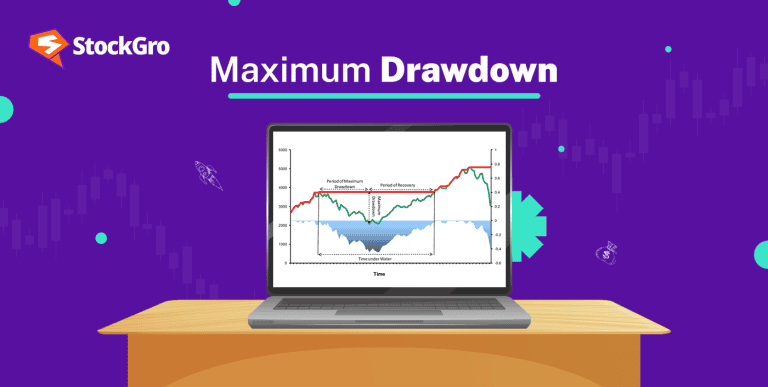
Mr Sanjay Malhotra took charge of the Reserve Bank of India on 11th December 2024 and sits at the helm of USD 568851.8 million foreign currency assets and USD 66978.76 million gold reserves as of 29th November 2024.
The Central Bank of India, RBI is the apex institution of the country’s banking and financial structure. The Governor of RBI sets forth the country’s fiscal and monetary policy. The strategies and opinions of the Governor have deep implications for the lives of common Indians.
Here is every key detail on this massive development of Mr Sanjay Malhotra becoming the next RBI Governor.
Key takeaways from the term of Shaktikanta Das
Mr Shaktikanta Das took charge of the central bank during a tumultuous time when the then-Governor Urjit Patel unexpectedly resigned nine months before his term was about to end. He restored stability and made critical decisions.
He stabilised the Non-Banking Financial Companies (NBFCs) after the IL&FS Crisis through several key steps including restoring liquidity and strengthening investor confidence. Das reduced the Repo rates from 6.5% to a record low of 4% during Covid.
Under his tenure, he gave a significant push to UPI and digital payments. The then-governor also withdrew the ₹2000 notes from circulation.
The outgoing governor’s tenure ended on 10th December 2024 when he made way for Mr Sanjay Malhotra.
Who is Sanjay Malhotra?
Sanjay Malhotra received his master’s degree in public policy from Princeton University and his bachelor’s in computer science engineering from IIT Kanpur.
Sanjay Malhotra is also an Indian Administrative Service (IAS) officer from the Rajasthan cadre and was appointed revenue secretary on December 1, 2022, after serving as secretary in the Department of Financial Services (DFS) for eight months.
Malhotra was the chairman and managing director of Rural Electrification Corporation (REC). He also served as an additional secretary in the Ministry of Power. Malhotra has served as a project coordinator with the United Nations Industrial Development Organisation (UNIDO) in a foreign appointment where he held the rank of deputy secretary.
In one of his latest public appearances on December 4, Malhotra warned officials of the Directorate of Revenue Intelligence (DRI) not to “kill the golden goose” and to consider the country’s interests before releasing high-pitched notifications in commercial fraud investigations.
Sanjay Malhotra appointed as the RBI Governor
The Centre notified on Monday (December 9, 2024) the selection of Revenue Secretary Sanjay Malhotra as the 26th Governor of the Central Bank of India, a day prior to when the current Governor Shaktikanta Das’ six-year tenure expires (December 10, 2024).
He is set to serve a three-year tenure. The new governor will lead his debut monetary policy review on February 5–7, 2025.
What to expect from his term?
Sanjay Malhotra, the current Governor of the Reserve Bank will have to deal with rising inflation.
The new RBI Governor’s primary challenge will be the rupee. The INR has been under intense pressure because of the dollar gain and foreign portfolio investors (FPIs) withdrawing a net ₹ 21,612 crore in November.
Malhotra is responsible for dealing with the increased credit demand. Retail clients are increasingly seeking alternate investing possibilities. This is putting pressure on banks’ funding.
However, the banking system’s structural liquidity problems are projected to increase as a result of its reliance on short-term solutions.
Conclusion
Historically speaking, the functioning of every RBI Governor is aligned with the principles and oversight of the central bank itself. This causes a great homogeneity in the functioning of the RBI Governors and the resultant continuity in RBI’s policies. A degree of such continuity in policies is necessary for the optimum performance of the economy.
However, the unique professional expertise of each Governor has added a new sheen to the role of the apex institution and enabled the body to help the economy overcome the challenges of the present. The new Governor has several challenges waiting to greet him as he enters office. It will be interesting to bear witness to his impact on the India story.
FAQs
- Who is the RBI Governor of India in 2024?
The outgoing Governor Shaktikanta Das’ tenure ended on 10th December 2024 when he made way for Mr Sanjay Malhotra. Malhotra took charge of the RBI on 11th December 2024. He is a Princeton-educated revenue secretary and senior bureaucrat with more than 30 years of civil service expertise.
- What is the RBI announcement for 2024?
On December 9, 2024, the Central Government notified the selection of Revenue Secretary Sanjay Malhotra as the 26th Governor of the Reserve Bank of India, a day prior to the current Governor Shaktikanta Das’ six-year tenure ending on December 10, 2024. The current governor is a seasoned IAS officer with degrees from prestigious universities like Princeton and IIT.
- When was R N Malhotra Governor of RBI?
Ram Narain Malhotra (1926–1997), usually referred to as R.N. Malhotra, was the 17th Governor of the RBI. He launched the 500-rupee currency and established the Discount and Finance House of India and the National Housing Bank. He headed the Malhotra Committee, which advocated modifications in the insurance business.
- Who is the 24th Governor of RBI?
Urjit Patel is the 24th Governor of the Reserve Bank of India. Born in Kenya he resigned unexpectedly before the completion of his term. He was also the Deputy Governor of RBI.
- What is the repo rate of RBI in 2024?
Amidst growing inflation and economic slowdown RBI has declared the repo rate at 6.5%. This is the 11th time that the repo rate hasn’t been changed. There were a lot of expectations for some changes, however, RBI stuck to “neutral”.


